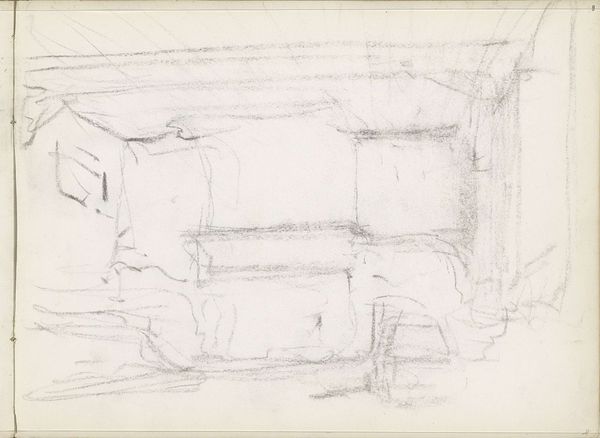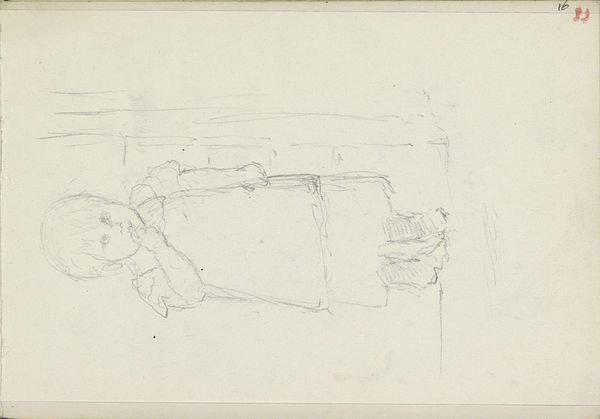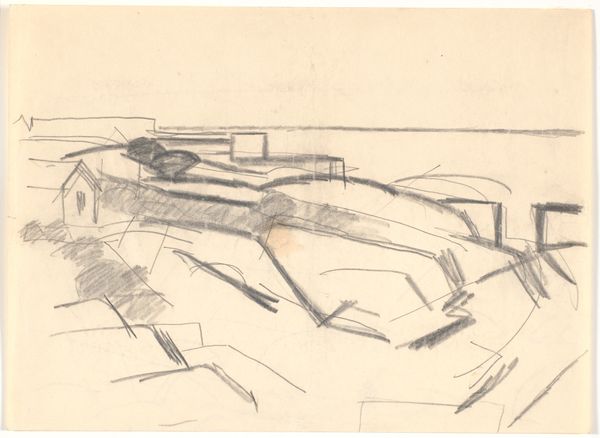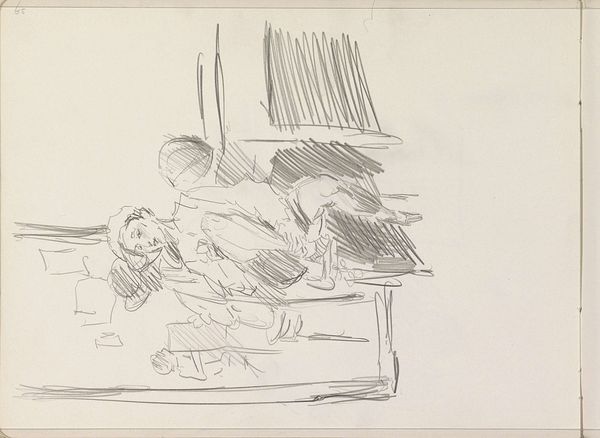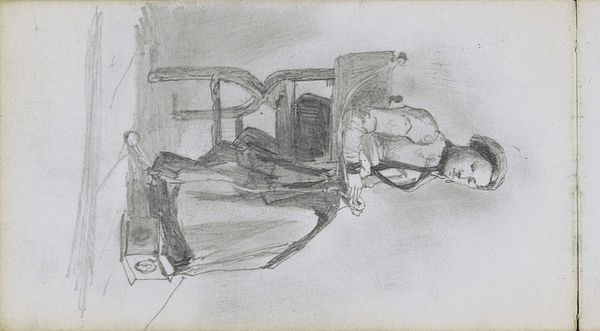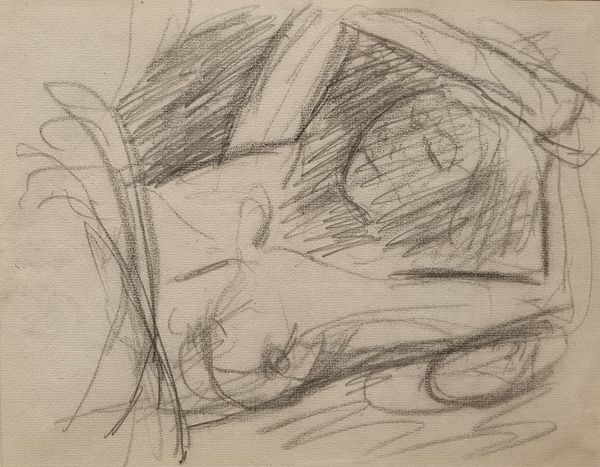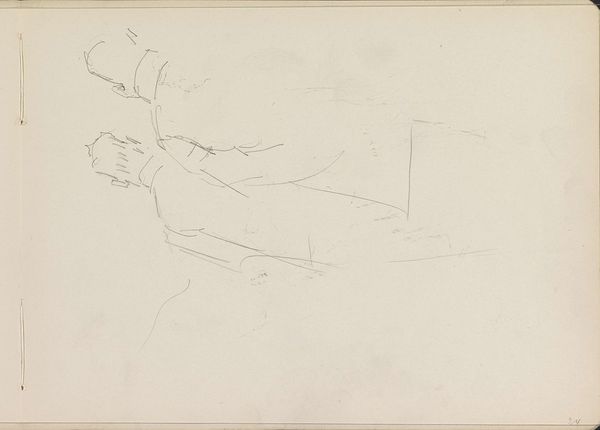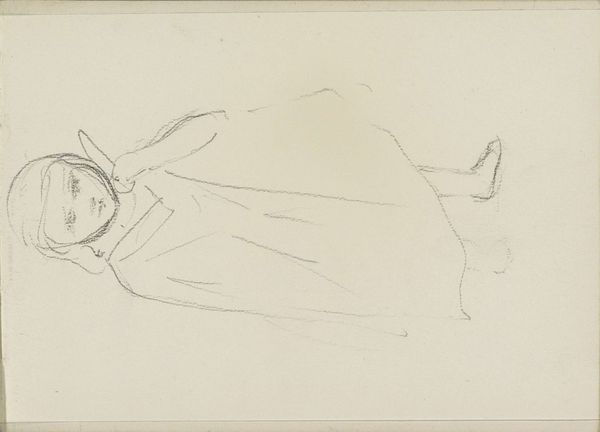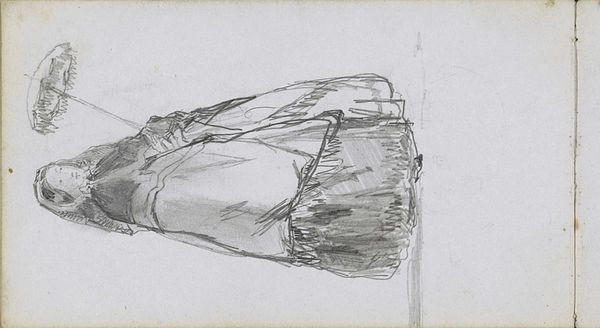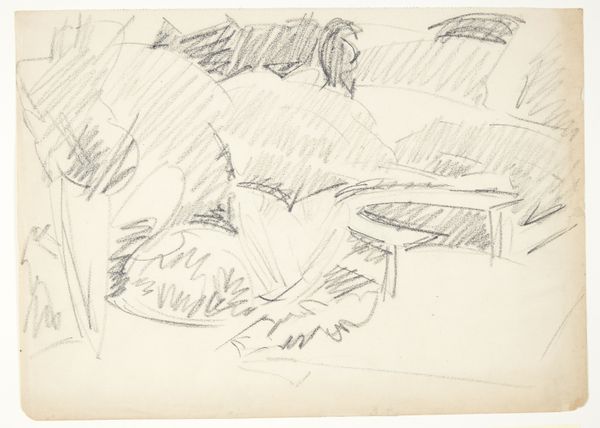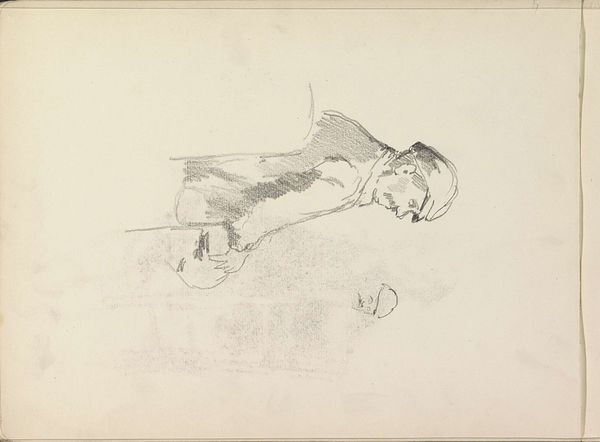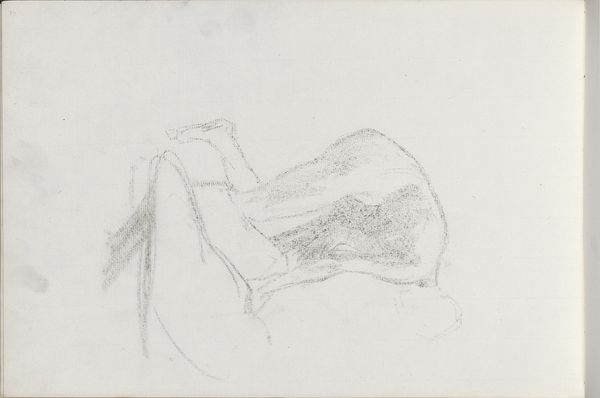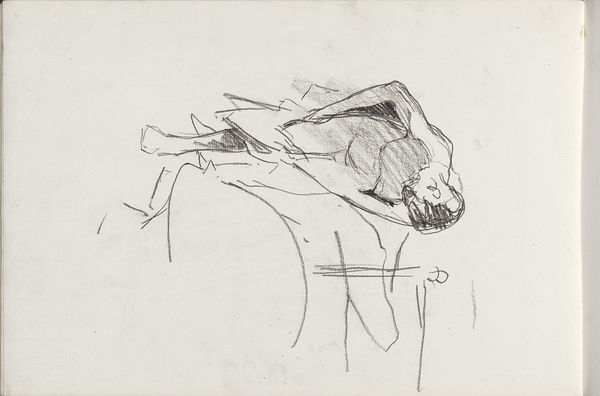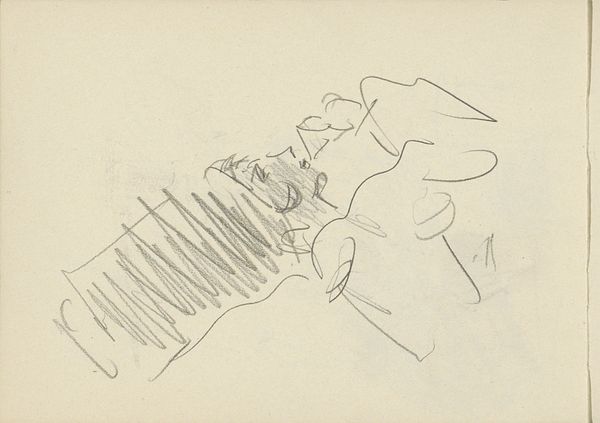
drawing, pencil
#
portrait
#
drawing
#
figuration
#
pencil
#
portrait drawing
#
realism
Copyright: Public Domain: Artvee
Editor: Here we have James McNeill Whistler’s "A girl reclining on a couch, reading," made with pencil sometime between 1858 and 1860. The figure seems lost in her book, almost as if retreating from the world. What strikes me is how ephemeral the whole image feels—what do you see in this piece? Curator: Beyond the seeming fragility, I see a powerful statement about women and intellectual space in the mid-19th century. Leisure was becoming democratized, yet access still varied drastically across socioeconomic and racial lines. Who was this woman? What societal constraints were she up against, even within the confines of her domestic sphere? Does her access to leisure activities challenge established gender roles of the era? Editor: I hadn't considered the leisure aspect in such depth, but I understand your reading of this art now, could you elaborate on how artistic and literary depictions contributed to, or resisted, those norms? Curator: Certainly. Works like these were not just aesthetic objects. They participated in broader cultural conversations about female agency. Were women confined to the domestic space or were they able to find some independence in art, culture and literature? Was the simple act of reading considered subversive? In a way, the seemingly quiet moment could be a very disruptive thing. Editor: This has completely changed my initial understanding. It makes you wonder about the quiet acts of resistance that are sometimes overlooked. Curator: Precisely. By examining seemingly straightforward scenes through the lens of gender, class, and access, we unlock richer meanings about our historical reality. Editor: Thank you! I’ll never look at a reclining figure the same way again!
Comments
No comments
Be the first to comment and join the conversation on the ultimate creative platform.
